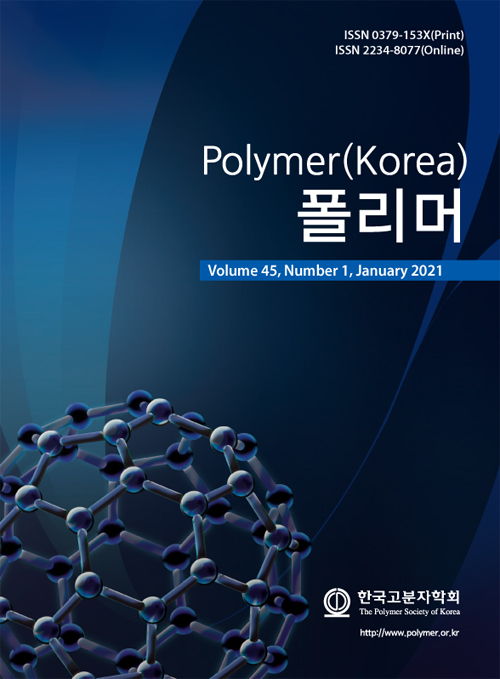- Synthesis and Characterization of Polyaniline-Polyimide Thin-film Composite Membranes for Vegetable Oils/Solvent Separation
Naveed Shahzad Ali, Abdul Ghaffar†
 , Asif Ali Qaiser*, Muhammad Ahmad*, and Khurram
, Asif Ali Qaiser*, Muhammad Ahmad*, and KhurramDepartment of Chemistry, University of Engineering and Technology, Lahore-54890, Pakistan *Department of Polymer and Process Engineering, University of Engineering and Technology, Lahore-54890, Pakistan
- 식물성 기름/용매 분리를 위한 Polyaniline-Polyimide 박막 복합 Membrane의 합성과 특성 분석
The recovery of solvents from the extracted oils using conventional thermal separation processes i.e. distillation or evaporation is often an energy-intensive process. To provide an energy-efficient alternative, an organic solvent nanofiltration thin-film composite membrane was prepared by depositing a thin layer of polyaniline (PANI), a selective layer, via interfacial polymerization on a crosslinked polyimide (XPI), a base ultrafiltration support membrane, to provide selective transport of constituents of a miscella. The membrane was characterized by microscopic, spectroscopic, and thermal analysis. The evaluation of the separation performance was carried out by a dead-end stirred cell using three vegetable oils. For sunflower, corn, and castor oil/n-hexane mixtures, the membrane resulted in a % rejection of 50, 56, and -44, respectively. A comparison of mass flux and rejection of corn and castor oils suggests that the PANI/XPI membranes showed a strong ion-exchange behavior significantly recognizing charge macromolecules due to the presence of charged emeraldine PANI.
Keywords: organic solvent nanofiltration, thin-film composite membrane, interfacial polymerization, crosslinking, vegetable oil/solvent separation
- Polymer(Korea) 폴리머
- Frequency : Bimonthly(odd)
ISSN 0379-153X(Print)
ISSN 2234-8077(Online)
Abbr. Polym. Korea - 2023 Impact Factor : 0.4
- Indexed in SCIE
 This Article
This Article
-
2021; 45(1): 68-78
Published online Jan 25, 2021
- 10.7317/pk.2021.45.1.68
- Received on Jul 25, 2020
- Revised on Sep 21, 2020
- Accepted on Sep 23, 2020
 Correspondence to
Correspondence to
- Abdul Ghaffar
-
Department of Chemistry, University of Engineering and Technology, Lahore-54890, Pakistan
- E-mail: abdul.ghaffar@uet.edu.pk








 Copyright(c) The Polymer Society of Korea. All right reserved.
Copyright(c) The Polymer Society of Korea. All right reserved.